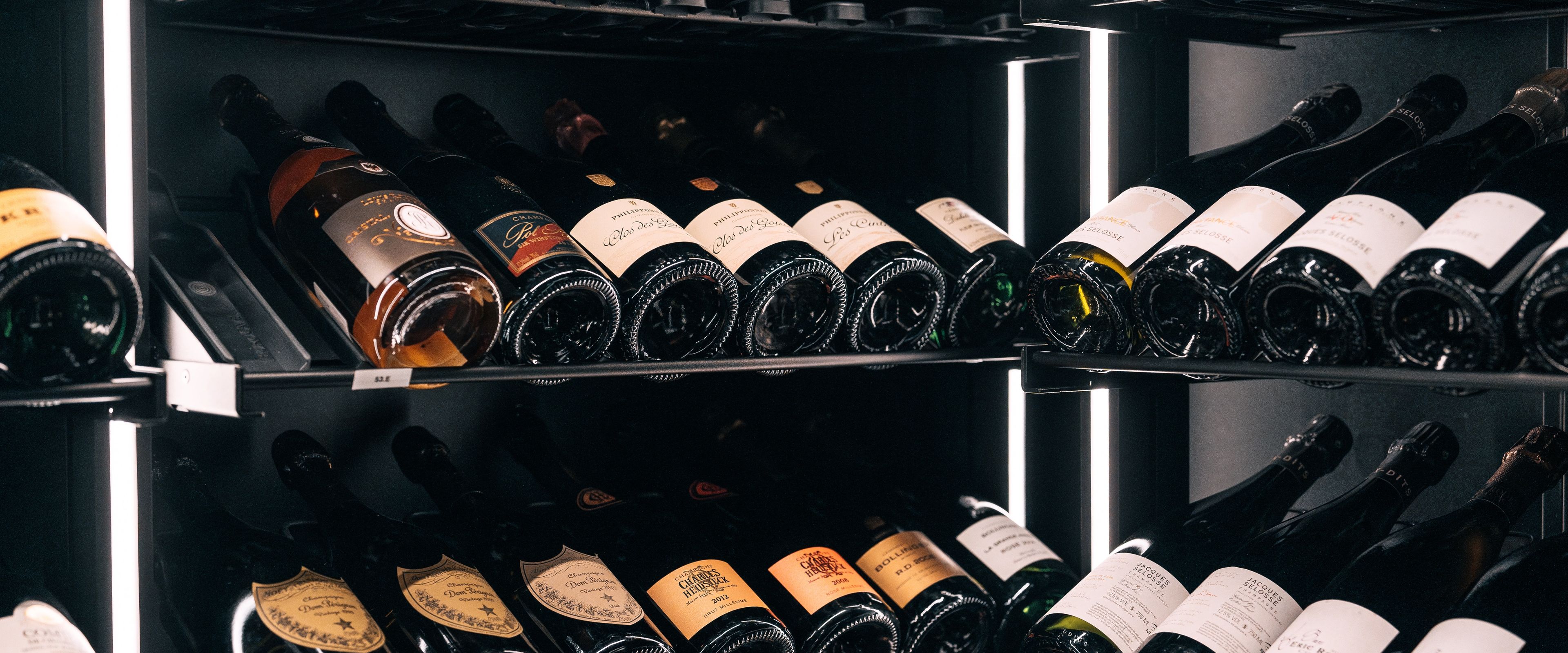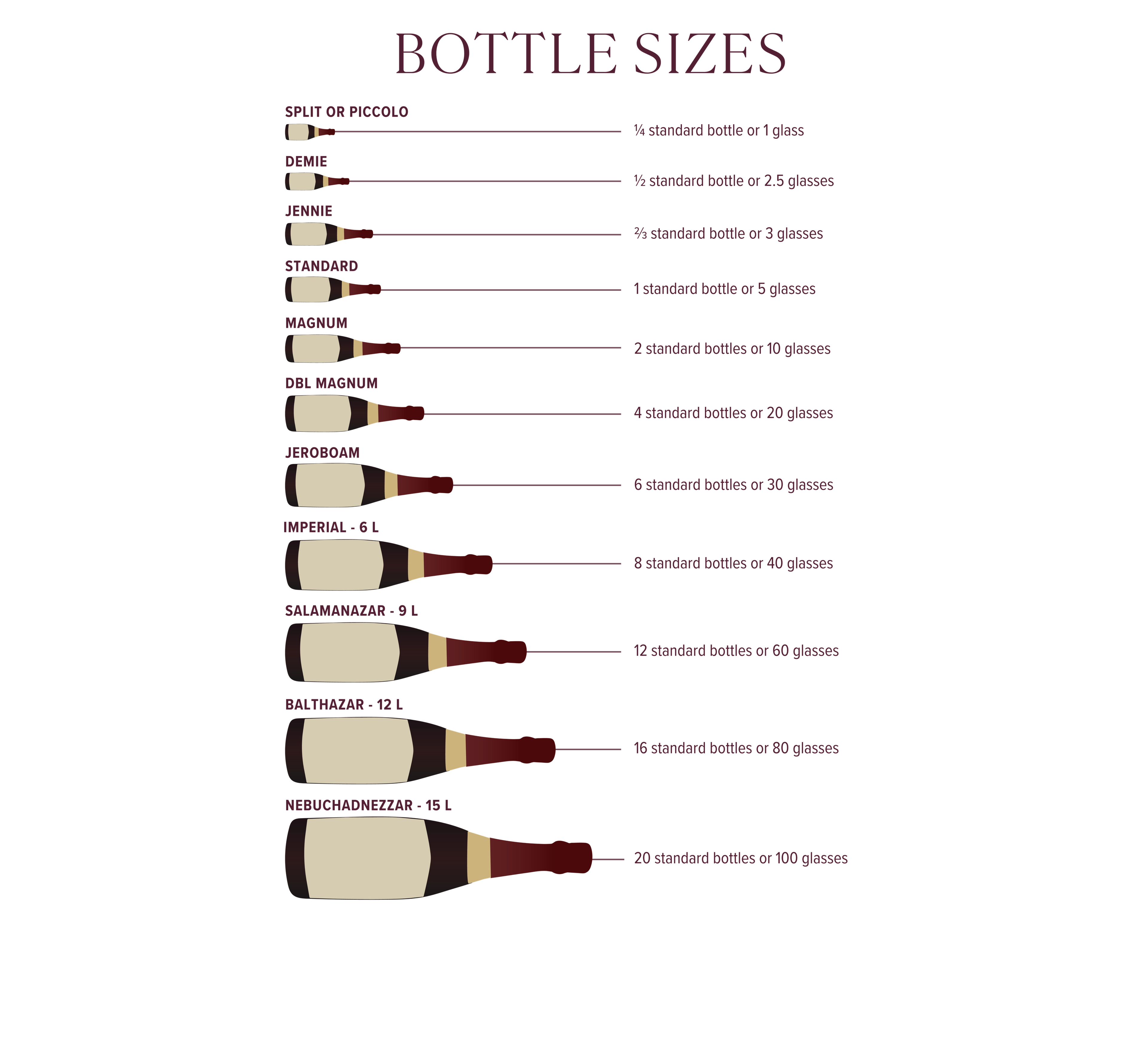
Guides
Bottle types, sizes, and quantities
What’s important?
When choosing a wine cooler, it is important to consider your needs and the size of your wine collection. Both bottle types and bottle sizes can impact the capacity and storage options of the cooler. Bottles come in various shapes, such as Bordeaux, Burgundy, Champagne, and Riesling, and each bottle has its own dimensions, which may take up more or less space in the cooler.
It is a good idea to choose a wine cooler that is slightly larger than initially intended, as a wine collection often grows over time. A cooler with a little extra space ensures that you can store bottles properly while providing the necessary flexibility to accommodate new bottle types and sizes as the collection evolves.
Choose a wine cooler with a little extra space – your wine collection will grow quickly, and it’s always nice to have room for more bottles... or more excuses to buy new wine.
Bente, Showroom Manager, Hillerød

Capacity of the wine cooler
Bottle types
Wine bottles come in various sizes and shapes, each serving a practical purpose in terms of storage and presentation. The design of the bottles is not only aesthetic but also functional, as they are created to preserve the quality of the wine and highlight the specific characteristics of the grape variety or wine region. To optimize storage in a wine cooler, it is important to understand how these bottles differ in size and shape. Below are the most common bottle types and their practical use:
● The Champagne bottle has a distinctive shape with a deep concave base and is generally wider than most other bottles. This shape makes the bottle more voluminous and suitable for storing sparkling wines, especially those from the Champagne region in France. The wide base helps handle the high pressure in the bottle, which is a result of the natural bubbles in Champagne.
In a wine cooler, the Champagne bottle requires more space, and it can be difficult to stack these bottles effectively due to their shape. It is best to store them lying down, but ensure there is enough space for the bottle to rest without being cramped.
● The Bordeaux bottle is the most common bottle shape, with straight shoulders and a wider base. This type of bottle is primarily used for red wines from the Bordeaux region but is also used for red wines from other areas. The bottle supports the wine's robustness and tannin structure.
In wine coolers, the Bordeaux bottle is easy to store and can be stacked effectively. The standard size allows for multiple bottles to be placed on the same shelf, which optimizes space in the cooler. The bottle should be stored lying down to ensure the cork remains moist and sealed.
● The Burgundy bottle has a curved shape with softer shoulders and a narrower neck. This type of bottle is often used for wines from Burgundy, including Chardonnay and Pinot Noir, and highlights the wine's elegance and delicacy.
The Burgundy bottle is slightly wider than the Bordeaux bottle and may therefore require more space in a wine cooler than a standard Bordeaux. It may be easier to stack than Champagne bottles, but still requires attention to ensure the bottles are not stacked too closely. As with the Bordeaux bottle, Burgundy bottles should be stored lying down to preserve the quality of the wine.
● The Riesling bottle is long and slender and is primarily used for Riesling wines, particularly those from Germany. The bottle's height makes it different from other bottle types and requires special attention when storing.
In a wine cooler, the long shape means that the depth of the cooler is important for proper storage. The bottle can be difficult to stack with other bottles, so it should be placed on a shelf with sufficient depth. As with the other bottles, it is recommended to store it lying down to ensure correct wine storage.
"The standard bottle"
The standard Bordeaux bottle is measured and defined in EU legislation, and bottle numbers and capacities are usually based on these specific measurements. If you only have bottles with these measurements, you can rely on the instructions regarding the number of bottles and capacity in a wine cooler.
However, if you have a mixed collection of bottles and bottle types, a good rule of thumb is to subtract 20% from the recommendation, ensuring that you have enough space for your entire wine collection in the cooler.

Practicality and aesthetics
Bottle placement
When storing wine in a wine cooler, it is important to consider both practical storage and aesthetics while also taking into account the correct temperatures for each bottle type. Bordeaux bottles, which are robust and often stored for longer periods, thrive best at a temperature between 12-16°C. This bottle is easy to stack on shelves, and you can advantageously store multiple bottles of the same type together to optimize space.
Champagne bottles, which require higher pressure and lower temperatures, should be stored at around 6-10°C. Since these bottles are wider, it is often easier to find space for them on display shelves, which give a visual representation of your collection.
Riesling bottles, which have a taller and slimmer shape, are best stored at a cooler temperature of around 8-12°C. These bottles require depth in the cooler, so it is a good idea to place them on shelves that accommodate their length. Burgundy bottles, typically stored at 12-14°C, have a wider form, so it can be practical to arrange them on shelves designed to handle bottles with a slightly larger diameter.
When filling your wine cooler, it is recommended to fill it to at least 80%. A well-filled cooler helps maintain a stable temperature, as the liquid in the bottles helps retain the cold. This means that the compressor will need to work less, saving energy and potentially prolonging the lifespan of the compressor.
Fill your wine cooler at least 80% – it helps maintain a stable temperature, saves energy, and extends the lifespan of the compressor.
Bjarne, Showroom Hillerød
Conclusion
When storing wine in a wine cooler, it is important to take into account the different shapes and sizes of bottles. If you need to stack bottles, it is generally easier to stack several of the same type of bottle on the same shelf.
Champagne bottles require more space due to their width, while Bordeaux bottles have a standard size that makes them easier to store and stack. Burgundy bottles are wider and require a bit more space, while Riesling bottles' height means that a cooler with more depth is necessary.
Most importantly, it is worth mentioning that bottle types and bottle sizes can vary. So even though "standard bottles" are often referred to within different types, you should be aware that all types of bottles can vary.